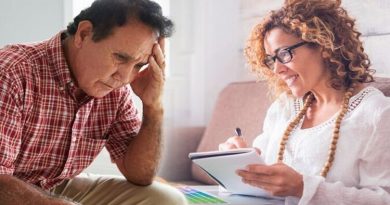Solar irradiation inactivates SARS-CoV-2 and other human coronaviruses, finds study
Coronaviruses irradiated with simulated sunlight used to infect cells showed reduced infectivity and reduced viral replication compared to viruses that were not irradiated.
Short wavelength ultraviolet (UV) light is widely used to kill many microbes, including viruses. Studies have also shown that ultraviolet light can also kill the severe acute respiratory syndrome coronavirus 2 (SARS-CoV-2), the cause of the COVID-19 pandemic.
However, short-wavelength UV is generally not present in sunlight at ground level, and most of the UV falling on us is around 320–400 nm in wavelength. UV of wavelength less than 320 nm (UVB) can be less than 2% of the total UV light received on the ground. Several studies have reported the inactivation of SARS-CoV-2 exposed to UVB, including the indirect effect of exposure to solar UVB in reducing COVID-19 deaths.
.jpg)
The effect of UV doses achievable at ground levels and at doses that are present in the environment is not very well known yet. Such knowledge will be helpful in providing more options for decisions on public health.
Sunlight affects viral functioning
Researchers from the University of Arizona, Tucson, USA, investigated the effect of UV in sunlight at doses normally seen on the ground on human coronaviruses HCoV-NL63 and SARS-CoV-2. A preprint version of the study is available on the bioRxiv* server, while the article undergoes peer review.
The authors exposed HCoV-NL63 to a high dose of simulated solar UV, which covers the entire UV spectrum, and used the irradiated viruses to infect Calu-3 and Caco-2 epithelial colon cells. They found that irradiation of the viruses before infection reduced its infectivity by almost 8-fold and 4-fold, respectively, which they determined using a plaque assay. Analysis of the genomic RNA numbers also indicated suppression of HCoV-NL63 viral replication at low doses of 240 mJ/cm2.
After infecting Calu-3 lung cells with HCoV-NL63 after UV irradiation, the team also looked at the gene expression of the infected cells. In cells infected with the virus without any UV irradiation, there was an upregulation in genes regulating inflammatory signals and heat shock response.
However, cells infected with the irradiated virus showed no or very less response in gene expression. This provides further support that UV irradiated viruses have reduced infectivity compared to unirradiated cells. In addition, genes related to viral damage caused by UV irradiation were also altered.
The researchers then infected Vero monkey epithelial cells with SARS-CoV-2, which was irradiated with UV. The number of infectious virions measured after three days by plaque-forming assay showed a significant reduction in viral infectivity.
SARS-CoV-2 replication was dependent on the dose of UV irradiation. At a high dose of 1010 mJ/cm2, they found complete inhibition of viral replication. Similar suppression of SARS-CoV-2 viral inhibition was also seen in Calu-3 human lung epithelial cells. Gene expression associated with infection was reduced significantly when the cells were infected with irradiated cells. This suggests SARS-CoV-2 is sensitive to UV at exposure levels generally seen in the environment.
Potential for sunlight-induced viral inactivation
Viral inactivation was seen at doses normally seen in the environment near the ground, and it was seen even at levels that are below those that cause sunburns. However, human solar exposure is complex and depends on many factors like the season, where the sun is in the sky and latitude. So, how the study results apply to human populations will still need to be explored further.
In addition, since the experiments were conducted using the full solar spectrum, the effect of each individual component still needs to be elucidated. Furthermore, the real-world effects of solar irradiation may be complicated by other factors such as airborne and aerosol transmission and viral retention on surfaces.
*Important notice
bioRxiv publishes preliminary scientific reports that are not peer-reviewed and, therefore, should not be regarded as conclusive, guide clinical practice/health-related behavior, or treated as established information.
- Wondrak, G. T., et al. (2021) Solar simulated ultraviolet radiation inactivates HCoV-NL63 and SARS-CoV-2 coronaviruses at environmentally relevant doses. bioRxiv. https://doi.org/10.1101/2021.06.25.449831, https://www.biorxiv.org/content/10.1101/2021.06.25.449831v1.
Posted in: Medical Science News | Medical Research News | Disease/Infection News | Healthcare News
Tags: Aagenaes Syndrome, Assay, Coronavirus, Coronavirus Disease COVID-19, Gene, Gene Expression, Genes, Genomic, heat, Pandemic, Public Health, Respiratory, RNA, SARS, SARS-CoV-2, Severe Acute Respiratory, Severe Acute Respiratory Syndrome, Syndrome, Virus, Wavelength

Written by
Lakshmi Supriya
Lakshmi Supriya got her BSc in Industrial Chemistry from IIT Kharagpur (India) and a Ph.D. in Polymer Science and Engineering from Virginia Tech (USA).
Source: Read Full Article



